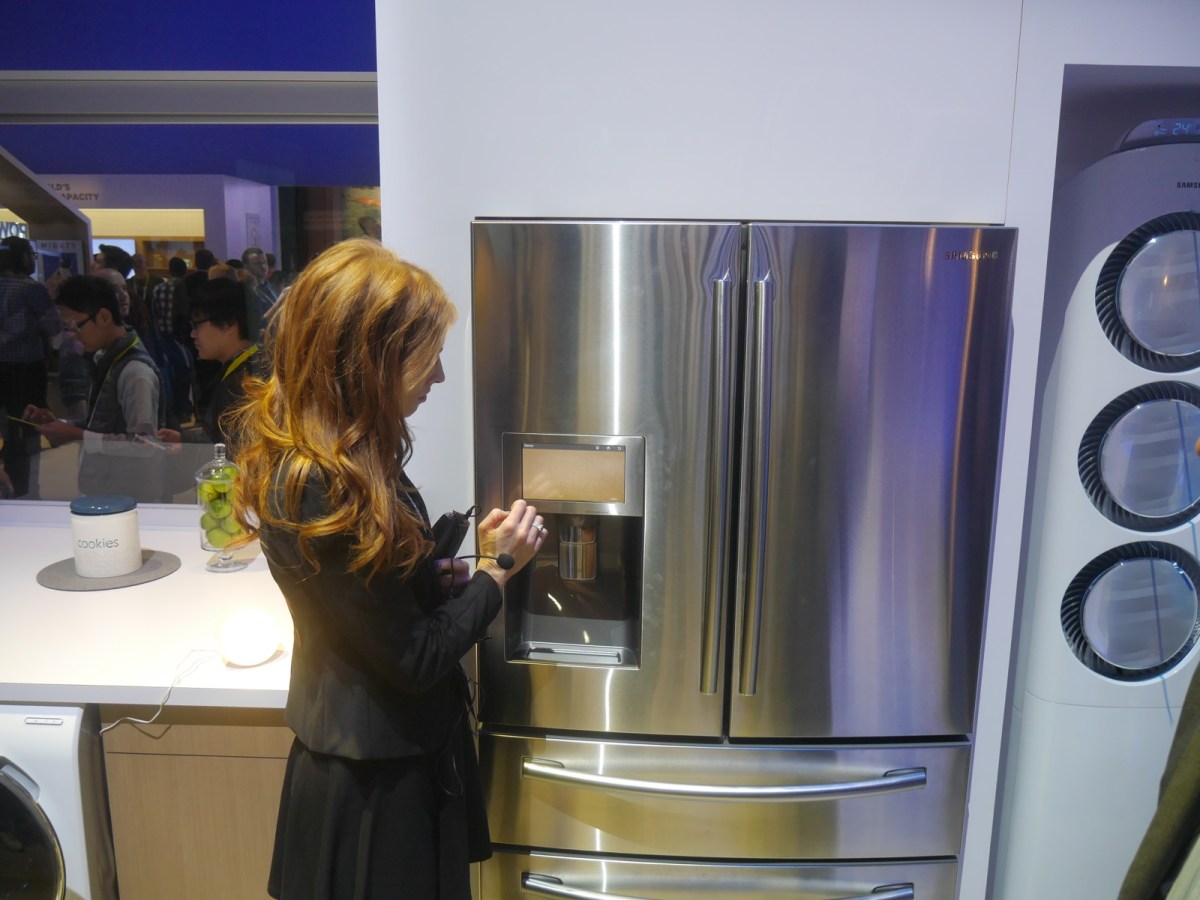Las Vegas, Nevada
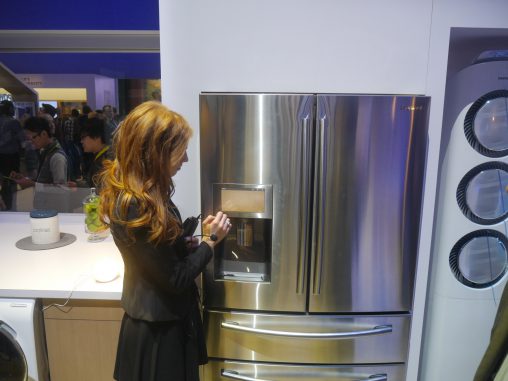
Samsung Electronics’ CES can be best summed up as having fewer new products but much more connectivity, according to Mike Lilly, head of home appliance for the local subsidiary.
As explained at Samsung’s keynote by CEO Boo-Keun Yoon, Samsung is investing heavily in developing an Internet of Things for the home, with the acquisition in August 2014 of home automation company SmartThings a beachhead pillar of this strategy. As new appliances are launched, the plan is for these products – be they washing machines, kitchen appliances, floorcare, amongst others – to connect to a central hub which is, in turn, controlled via one smartphone app. Samsung has stated goals of 70 per cent appliance connectivity by 2017 and 100 per cent by 2020.
Using the Smart Home App, Samsung customers will be able to receive messages when their washing cycle is complete, so clothes don’t soak too long; control the path of their of robot vacuum; and turn on their air conditioner on the way home. Looking into the future, heat and motion sensors will be able to recognise when you arrive home, and if you have company, and adjust appliance settings (turn the heater up in winter, for example) to best suit the environment.
Samsung showcased several SmartThings products on its CES stand, including various sensors and sockets to convert ‘dumb’ appliances into Smart appliances.
Although the focus is clearly on connectivity, there were also several new appliances on show at Samsung’s quite sizeable booth. The second generation of Samsung’s Wi-Fi refrigerator range will be coming to Australia in March for RRP $3,799. This fridge has a 8-inch touchscreen display that can mirror either a Samsung smartphone or TV, so you can watch programs or make and receive calls while preparing food, as well as hosting apps. The official line is that these apps are still to be determined, though they are expected to cover music, news and weather. The model on the stand featured Pandora internet radio.
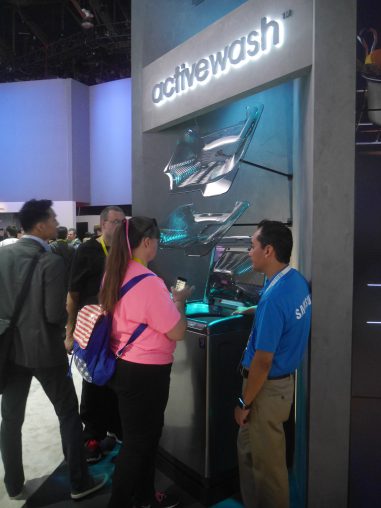
Coming to Australia in the second quarter of 2015 is Samsung’s activewash (styled in lower case) top load washing machine. Mike Lilly said that there hadn’t been any real innovation in topload washing for some time and, while frontloaders have significantly increased in popularity over the past decade, toploaders still make up a significant part of the market.
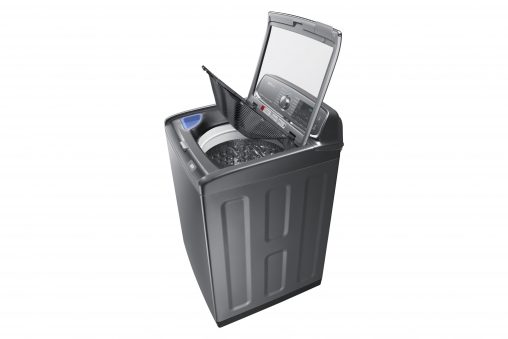
Research conducted by Samsung revealed that many consumers pre-wash or pre-soak clothes before putting them in the washing machine. The activewash washers have a ridge tray about 10-centimetres deep and a tap function so this function can be performed at the washing machine, with the clothes not needed to be transported between sink and appliance. While a nifty idea, there is a suggestion that that the activewash ‘sink’ isn’t especially deep, and could only be used for a few t-shirts and definitely not bedsheets. There will be 9- and 10-kilogram models of activewash washing machines coming to Australia.
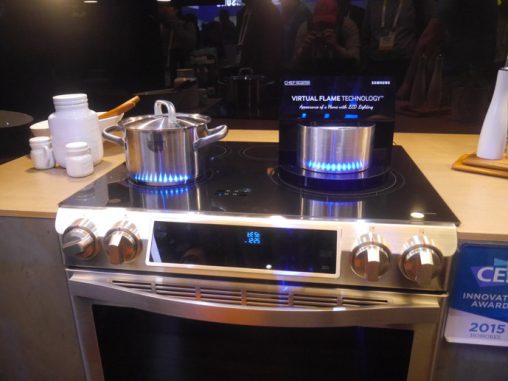
The final innovation from Samsung that will be coming to Australia is Virtual Flame Induction. This involves the placement of LED lights in the hob, which glow bright blue when in use, reflecting off pots and pans to indicate heat. The higher the ‘blue flame’ the hotter the hob is cooking at. This is considered both a safety and convenience feature and it was working quite well, at least on Samsung demonstration models. This technology is expected to be released in the second half of 2015.
What’s not coming to Australia, however, is Samsung’s Flex Duo freestanding oven. Using an insulated divider and a hinged door, the Flex Duo oven allows for two cooking cavities that can be used independently without the transfer of odours. Take out the divider and you have an large cooking space big dishes, such as baked turkeys. Because Samsung configures its freestanding ovens for the US market, which uses different sizes to Australia’s 600/900/1,200 paradigm, there would be little point in introducing this cooker Down Under.

